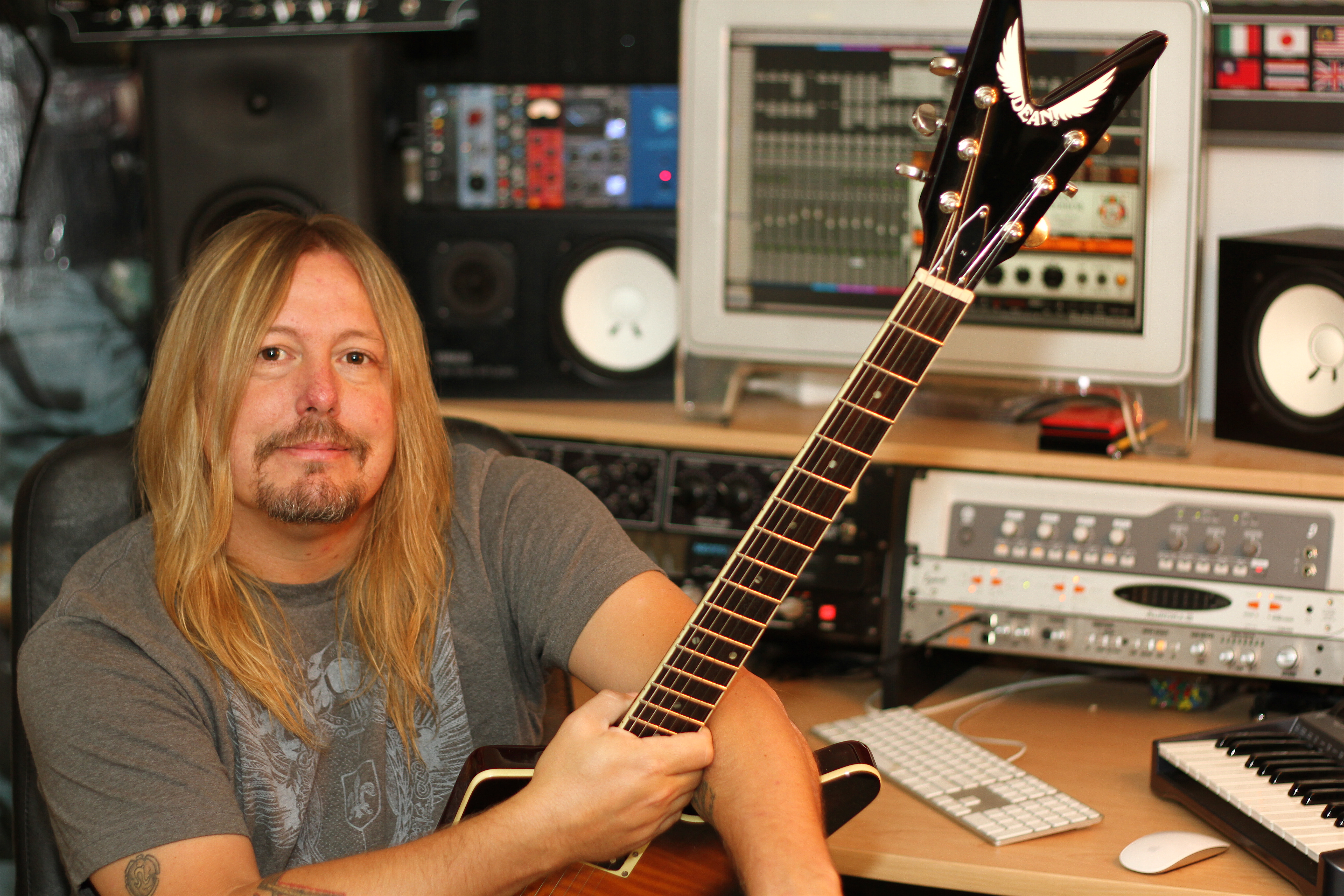Get Into the Box, Part 1: Getting Those Big, Old-School Sounds

Hello, everyone. My name is Pete Evick, touring guitar player and full-time engineer/producer for rock and roll icon Bret Michaels.
In the last few years, we have been fortunate enough to have two Top 40 records full of guitar-driven rock and roll in a time when we all hear the "Rock is dead" phrase way too often. That being said, we spend nine months a year on a tour bus and are not able to get into world-class or even local recording studios when the creative juices start flowing. So I've had to dive head first into getting killer guitar sounds straight from my software in the mobile studio I carry with me everywhere I go.
This process, if you don't already know, is defined as "recording in the box." For the most part, my articles will be about doing just that.
I recently had the good fortune of recording legendary Kiss guitar player Ace Frehley, who comes from the era when you put a mic in front of an amp and hit the record button. Skeptical yet optimistic, Ace put his trust in me and said, "You know my tone, so dial me in." The next words he said were, "That's it, sounds great."
So how did I approach getting the vintage sound of a guitar hero to be approved by said guitar hero, through a MacBook Pro and a set of inexpensive monitors?
I'll be real honest: The secret weapon and tool of choice is an app called AmpliTube by IK Multimedia. There are several other guitar amps, effect emulators, plugins and apps, but for the better part of a decade I find myself always reverting to this product. It simply works and is laid out to make sense to guitar players.
Regardless of what product you use, they will all have a lot of bells and whistles and options that often can cloud your own vision and honestly rob you of your creative time and energy. One of the biggest misused and understood concepts (bells and whistles) is using your emulator in "stereo mode." (Don't get me wrong — it has its uses.)
Get The Pick Newsletter
All the latest guitar news, interviews, lessons, reviews, deals and more, direct to your inbox!
While some guys have gotten historic guitar sounds out of crazy mic techniques and putting a mono guitar signal into a stereo field essentially just using one track or pass of the guitar part, it just does not create the sound most of us "remember" or are trying to get.
My biggest suggestion and most important advice is to simply record your "mono" guitar in mono, and use the tried-and-true technique of manually doubling, even quadrupling, your guitar tracks. It's the effect of the guitar being played twice and never exactly identical that creates that larger-than-life sound.
Putting your one track in stereo just spreads that one track out wider in your listening field; it doesn't create that "bigness" we are all looking for. Sure, there are plug-ins for doubling, and other tricks used in a pinch or in case of emergency, but to truly get that huge sound, even back in the day of 2-inch tape and analog hardware, this was and is how it was done.
So go into your app of choice, strip away anything stereo about it and dial in a sound of your liking. Take all the effects off — if it has a mic emulator, pick the closest thing to an old SM57 (This is and probably always will be the industry standard guitar mic), make sure it's set to a close-mic option (directly in front of the speaker); if you have an ambience setting, turn it off and record a guitar track. Then pan it left or right, do it all again on a second track, pan that one to the opposite side, and BAM!!! While maybe not perfect at first, I guarantee it's your first step into getting guitar sounds like the ones on those classic records you've been chasing.
I do want to mention that all those bells and whistles have a place in the recording process and are put there for a reason. But it's very misleading and overwhelming sometimes. The bottom line is to treat the emulator software as it was actual hardware; real heads, cabs and mic, and record the track like that.
The one exception to this rule is reverb. Not ambience or room sound; I mean the reverb found in an amp model. While I personally never do this, it may be necessary for some people to "wetten" up the sound a little for feel purposes, but be very careful to not overdo it. You can't take it away after you've laid it down. I'll get more into that and other things in the weeks to come. But for now, I hope you try this technique and enjoy the big sounds you can create by minimizing your options.
Right now Pete is on tour with Bret Michaels. Check out www.bretmichaels.com for tour dates and be sure to stop by the official Pete Evick Facebook page at www.facebook.com/PeteEvickBMB to learn more about Pete.









